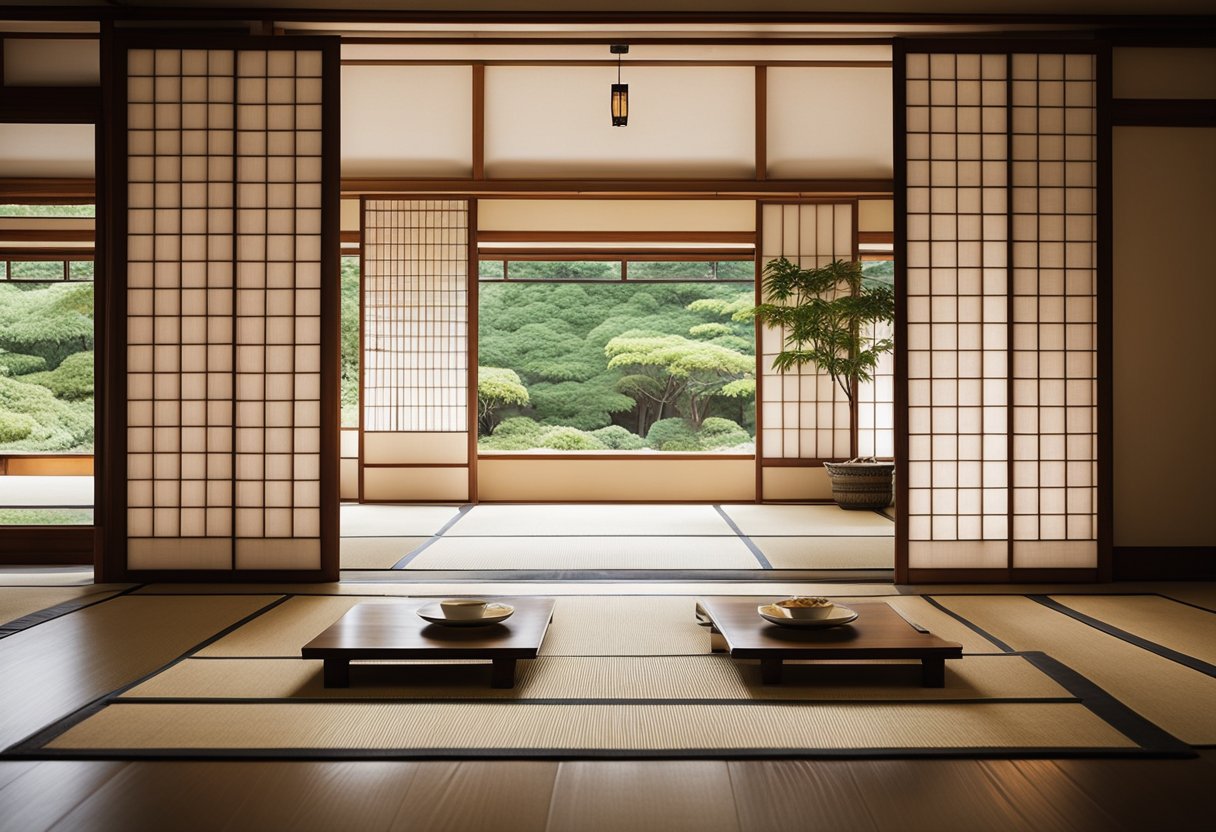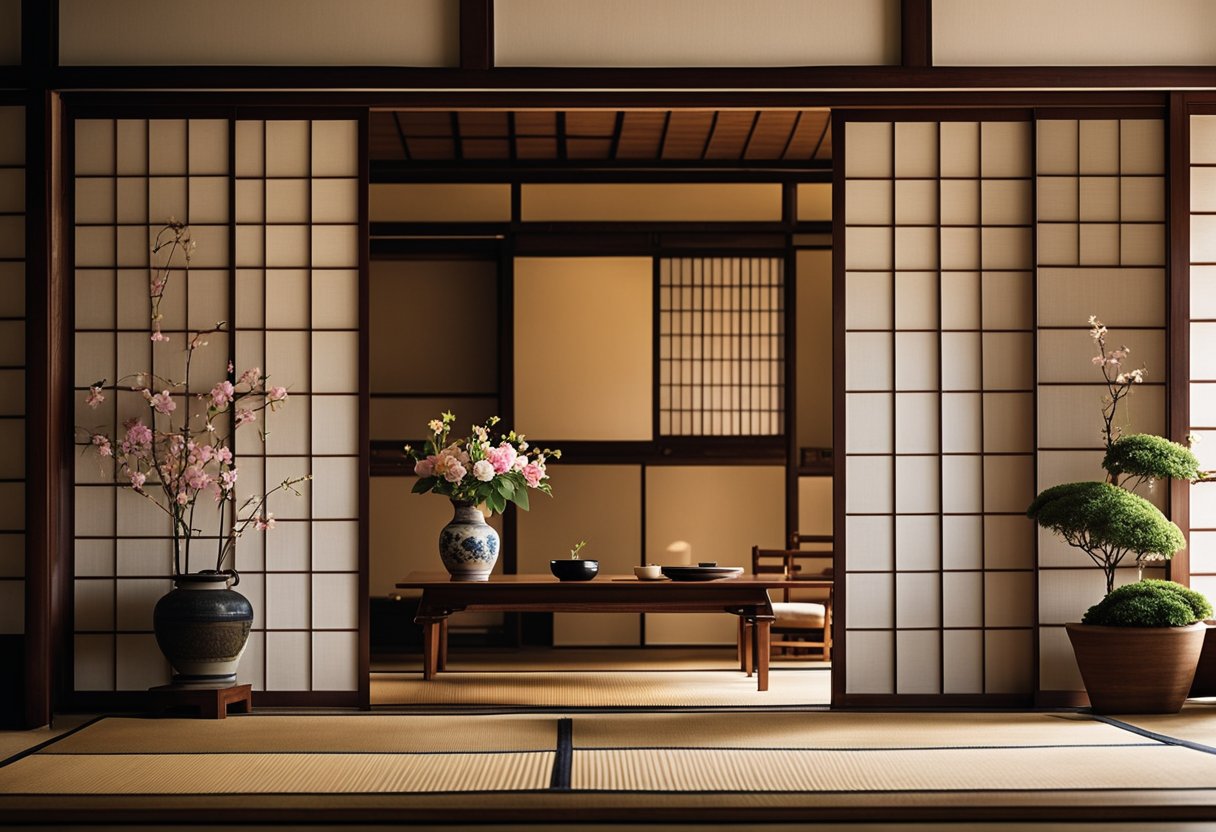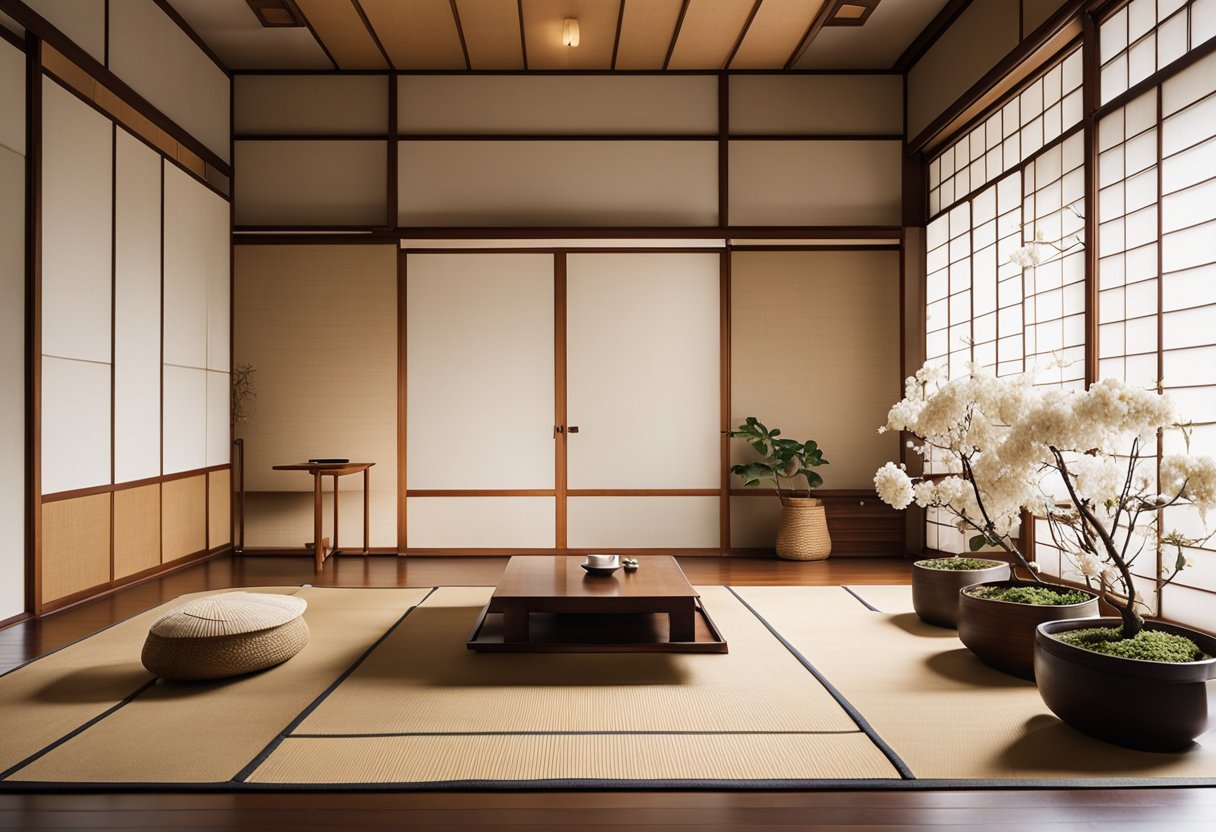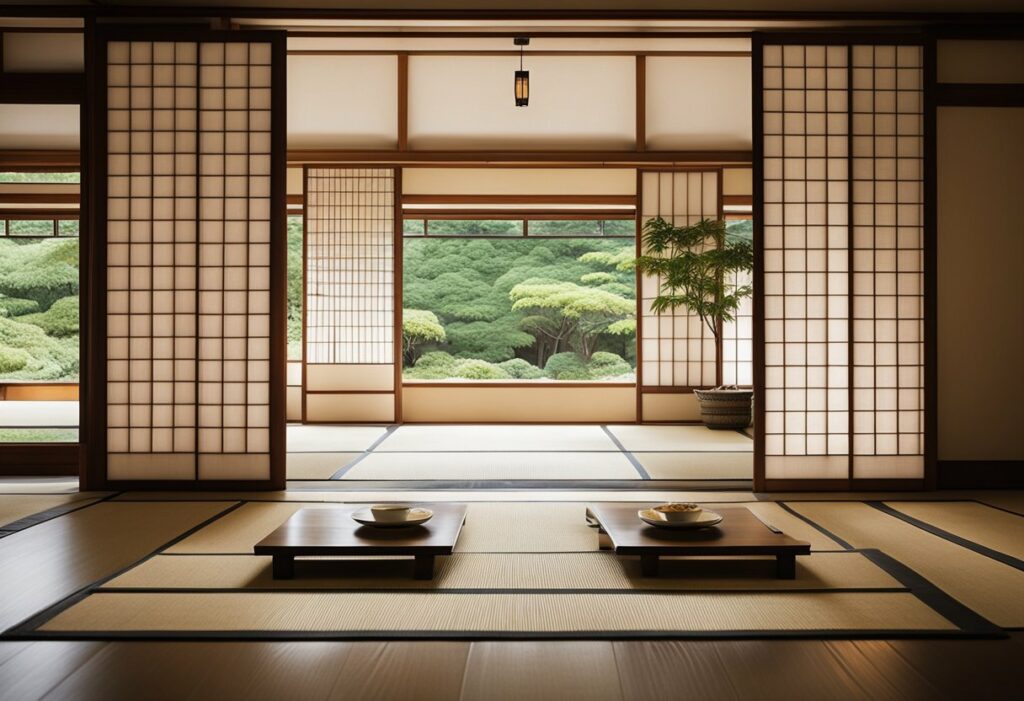Japanese Interior Design by Michelle Galindo: Transform Your Space with Authentic Japanese Style
If you’re looking for a design style that combines simplicity and elegance, Japanese interior design might be just what you need. This style is known for its use of natural colours and materials, and it’s gaining popularity in contemporary settings around the world. Michelle Galindo’s book, Japanese Interior Design, is a great resource for anyone interested in this style.

In her book, Galindo explores the fundamentals of Japanese interior design, including the use of natural light, simplicity, and the importance of creating a sense of harmony in a space. She also looks at the ways in which this style has evolved in contemporary settings, including offices, bars, and homes. Whether you’re a professional designer or simply looking to update your home, Japanese Interior Design is a great starting point.
Key Takeaways
- Japanese interior design combines simplicity and elegance, and is known for its use of natural colours and materials.
- Michelle Galindo’s book, Japanese Interior Design, explores the fundamentals of this style, as well as its evolution in contemporary settings.
- Whether you’re a professional designer or simply looking to update your home, Japanese Interior Design is a great resource for anyone interested in this style.
Fundamentals of Japanese Interior Design

If you are looking to incorporate Japanese interior design into your home, there are a few key principles to keep in mind. Japanese design is focused on simplicity, minimalism, and natural elements. Here are some of the key elements to consider when designing a space with a Japanese aesthetic:
Embracing Simplicity and Minimalism
One of the most important aspects of Japanese design is the concept of simplicity. This means that clutter is kept to a minimum, and only essential items are included in a space. To achieve this, it is important to focus on functionality and practicality when selecting furniture and decor.
Incorporating Natural Elements
Japanese design also places a strong emphasis on natural elements. This includes using natural materials such as wood, stone, and bamboo, as well as incorporating natural colours and textures into the space. This creates a calming and soothing environment that is in harmony with nature.
The Influence of Tradition in Modern Spaces
Traditional Japanese design elements can be incorporated into modern spaces to create a unique and timeless aesthetic. This can include the use of traditional materials such as tatami mats, shoji screens, and sliding doors. These elements can add a sense of history and tradition to a space, while still feeling modern and fresh.
Colour Palette and Lighting
The colour palette in Japanese design is typically neutral and natural, with a focus on earthy tones such as beige, brown, and grey. Lighting is also an important aspect of Japanese design, with a focus on creating a warm and inviting atmosphere. This can be achieved through the use of soft, diffused lighting and natural light sources.
Tatami: The Quintessential Japanese Element
Tatami mats are a quintessential element of traditional Japanese design. These woven straw mats are used as flooring in many Japanese homes, and can add a sense of warmth and texture to a space. They are also a great way to create defined areas within a larger space.
Maximising Space Through Design
Japanese design is all about making the most of a space, no matter how small. This means that furniture is often multi-functional, and storage is built into the design of the space. This allows for a clutter-free environment that is both functional and beautiful.
By incorporating these key elements of Japanese design into your home, you can create a space that is both calming and inviting. Whether you are looking to create a traditional Japanese aesthetic or simply add a touch of Japanese influence to your home, these principles can help guide your design choices.
Japanese Interior Design in Contemporary Settings

If you are looking for inspiration for your next interior design project, look no further than Japanese interior design. With its perfect blend of modern minimalism and traditional aesthetics, Japanese interior design has become increasingly popular in contemporary settings.
Residential Applications
Japanese interior design is perfect for residential applications. The minimalistic way of living and being has been a concept in Japan for many years, and this is reflected in the design of Japanese homes. The use of natural colours and simplicity in design creates a calming and relaxing atmosphere that is perfect for homes.
Commercial Spaces: Offices, Hotels, Shops, and Bars
Japanese interior design is not just limited to residential applications. It is also perfect for commercial spaces such as offices, hotels, shops, and bars. The use of natural colours and minimalistic design creates a calming atmosphere that is perfect for these spaces. Japanese interior design is also perfect for creating a unique and memorable experience for customers.
The Role of Designers in Evolving Aesthetics
Designers play a crucial role in evolving the aesthetics of Japanese interior design. From world-renowned designers to up-and-coming young talents, the land of the Rising Sun proves to be a land of endless inspiration and creativity. Designers have the skill and experience to integrate traditional aesthetics with modern minimalism to create stunning interior spaces.
Integrating Traditional with Modern
One of the unique aspects of Japanese interior design is the integration of traditional aesthetics with modern minimalism. This creates a perfect balance between tradition and modernity. The use of traditional materials such as tatami mats and shoji screens in modern spaces creates a unique and memorable experience.
In conclusion, Japanese interior design is a perfect blend of tradition and modernity. With its use of natural colours and minimalistic design, it creates a calming and relaxing atmosphere that is perfect for residential and commercial spaces alike. Designers play a crucial role in evolving the aesthetics of Japanese interior design, integrating traditional aesthetics with modern minimalism to create stunning interior spaces.
Frequently Asked Questions

How can one infuse minimalism into home decor inspired by Japanese design principles?
One of the key principles of Japanese interior design is minimalism. To infuse minimalism into your home decor, you can start by decluttering your space and only keeping items that serve a purpose or bring you joy. Next, focus on creating a sense of calm and simplicity by incorporating natural elements, such as wood and stone, and using a neutral colour palette. You can also consider using traditional Japanese furniture, such as tatami mats and shoji screens, to create a minimalist and authentic look.
What distinguishes Wabi-Sabi in the context of interior decoration?
Wabi-Sabi is a Japanese aesthetic that celebrates imperfection and the beauty of natural materials. In the context of interior decoration, Wabi-Sabi is about embracing the natural flaws and imperfections of materials, such as the grain of wood or the texture of stone. It’s also about creating a sense of warmth and comfort by incorporating natural elements, such as plants and textiles, and using a muted colour palette.
Could you explain the significance of natural elements in Japanese-inspired interiors?
Natural elements, such as wood, stone, and plants, are an essential part of Japanese-inspired interiors. They are used to create a sense of harmony and balance, and to bring the beauty of nature indoors. In Japanese culture, there is a deep appreciation for the natural world, and this is reflected in the design of interiors. By incorporating natural elements into your home, you can create a peaceful and calming atmosphere.
What are the key characteristics of a Zen-inspired living space?
A Zen-inspired living space is designed to create a sense of peace and tranquillity. Key characteristics include minimalism, simplicity, and a focus on natural materials. Furniture is often low to the ground and made from natural materials, such as wood and bamboo. The colour palette is muted and neutral, with an emphasis on whites, greys, and earthy tones. The space is also designed to be clutter-free, with a focus on creating a sense of calm and simplicity.
How does one achieve harmony and balance in a room using Japanese design aesthetics?
Harmony and balance are essential principles of Japanese design aesthetics. To achieve this in a room, start by decluttering and simplifying your space. Next, focus on creating a sense of balance by using natural materials, such as wood and stone, and incorporating traditional Japanese design elements, such as tatami mats and shoji screens. You can also use lighting to create a sense of balance, with a focus on natural light and soft, diffused lighting.
What role does light play in creating an authentic Japanese interior ambiance?
Light plays a crucial role in creating an authentic Japanese interior ambiance. In Japanese design, there is a focus on creating a sense of harmony and balance, and lighting is used to achieve this. Natural light is preferred, and windows are often left unadorned to allow light to filter in. Soft, diffused lighting is also used to create a sense of warmth and comfort. The use of paper lanterns and traditional Japanese lamps can also add to the ambiance.



